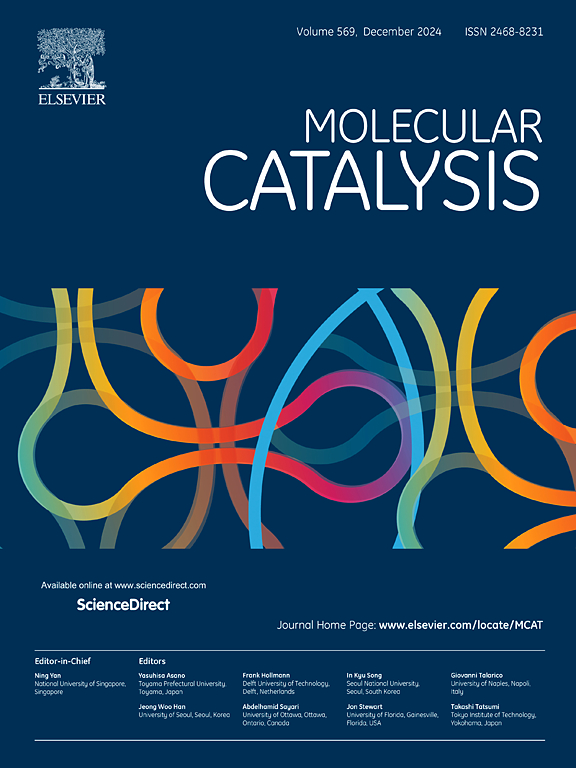Efficient plasma-assisted ammonia synthesis over a Ni catalyst supported on citrate-modified MgO-Al2O3
IF 3.9
2区 化学
Q2 CHEMISTRY, PHYSICAL
引用次数: 0
Abstract
Non-thermal plasma-catalyzed ammonia synthesis has garnered significant attention due to its high efficiency under mild conditions. However, developing highly efficient catalysts remains a challenge, and substantial improvements in catalyst performance are still needed. In this study, we developed a novel Ni-MgAl-CA catalyst using a one-pot citrate modification method. Under conditions of 25 kJ/L energy input, the ammonia synthesis rate of the Ni-MgAl-CA catalyst reached 6510 µmol/g/h, with an energy yield of 0.89 g-NH3/kWh. The catalyst's structure and surface properties were systematically characterized using various techniques. The results demonstrated that citrate modification significantly increased the concentration of oxygen vacancies on the catalyst surface, optimized the microstructure, and promoted the high dispersion of Ni. These oxygen vacancies played a critical role in enhancing the adsorption and activation of nitrogen molecules, as confirmed by experimental and characterization data. These findings confirm that citrate modification is an effective strategy for optimizing the structure and surface properties of catalysts, thereby significantly improving the efficiency of non-thermal plasma-catalyzed ammonia synthesis. This work offers valuable insights into the design and development of more efficient catalysts for ammonia production.

求助全文
约1分钟内获得全文
求助全文
来源期刊

Molecular Catalysis
Chemical Engineering-Process Chemistry and Technology
CiteScore
6.90
自引率
10.90%
发文量
700
审稿时长
40 days
期刊介绍:
Molecular Catalysis publishes full papers that are original, rigorous, and scholarly contributions examining the molecular and atomic aspects of catalytic activation and reaction mechanisms. The fields covered are:
Heterogeneous catalysis including immobilized molecular catalysts
Homogeneous catalysis including organocatalysis, organometallic catalysis and biocatalysis
Photo- and electrochemistry
Theoretical aspects of catalysis analyzed by computational methods
 求助内容:
求助内容: 应助结果提醒方式:
应助结果提醒方式:


